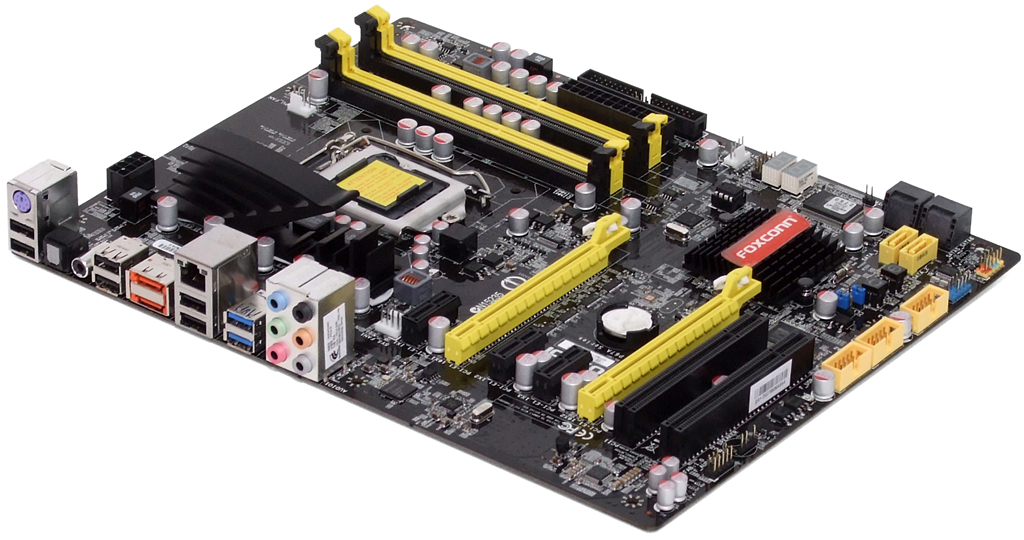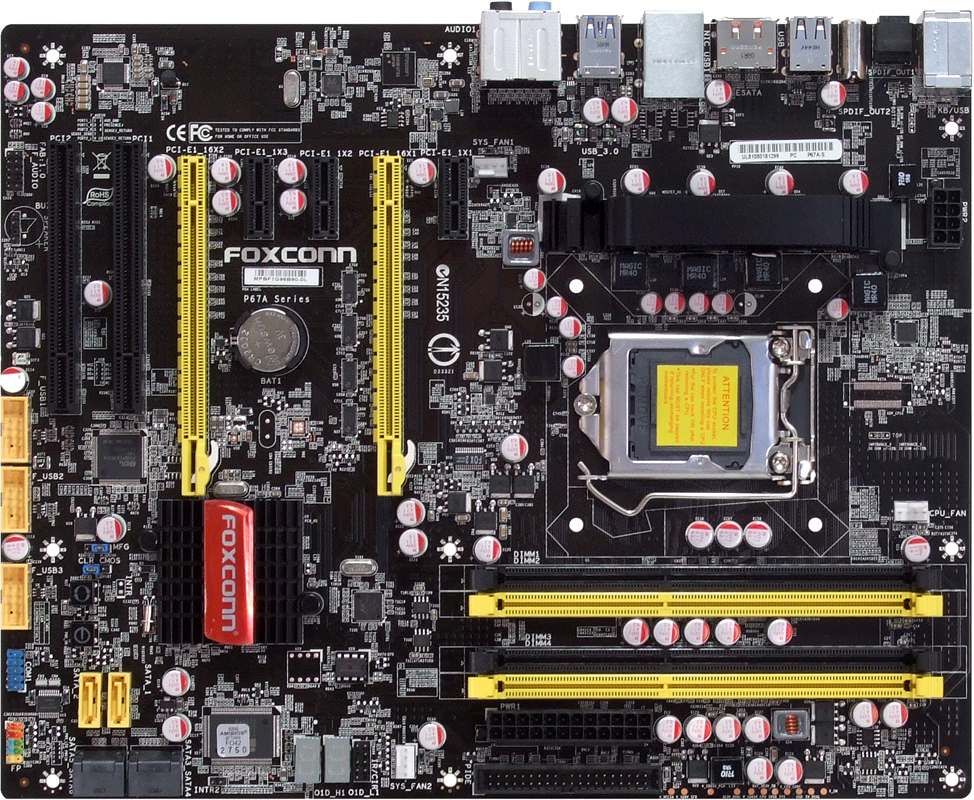P67 Motherboard Roundup: Nine $150-200 Boards
Improved per-clock performance and higher achievable frequencies are sure to put Intel’s latest K-Series CPUs on top of many builders’ whish lists, but they’ll still need a new socket to put it in. We test nine enthusiast-oriented LGA-1155 motherboards.
Foxconn P67A-S
OEM and ODM sales have traditionally been Foxconn’s core strength. Putting aside last year’s rumors that the company might pull out of the retail-branded business, it’s not surprising to see its focus shift from the high-margin enthusiast market to the high-volume mainstream. The only real surprise here is that Foxconn chose to submit the P67A-S for today’s $150+ roundup, rather than wait for the sub-$150 comparison.
One might believe that the P67A-S is a shot at the heart of Biostar’s market—the lean and mean overclocking machine—in which a $150 board with a high-end voltage regulator and only a few added features would be well-received. After all, the P67A-S has only one add-in drive controller (for eSATA), few legacy interfaces, no “nearly useless” four-lane tertiary graphics card slot, and USB 3.0 only on the rear panel. Yet, a quick look from above tells a different story.
Triple-slot graphics card spacing and automatic pathway switching could make the P67A-S a great low-cost starting point for a CrossFire build, since many gamers prefer to exhaust the bulk of their budgets on graphics prowess. Those pathway switches adapt the board from a single 16-lane slot to two eight-lane slots whenever a second card is detected.
We were a little surprised to see a 40-pin Ultra ATA interface, since most compatible drives are long-since deceased. Carried over from Foxconn’s overclocking days are a two-digit Port 80 diagnostics display and a full row of voltage detection pins along the P67A-S’ front edge, while onboard power and reset buttons ease bench testing exhibitions. On the other hand, we doubt that any serious overclocker will put much faith in the capabilities of its tiny four-phase CPU voltage regulator.
Anyone who really needs the Ultra ATA interface for an old drive will be pleased to find the connector located above the board’s center line, allowing easy cable reach to the top external bay of most cases. Foxconn also slides its front-panel audio header around an inch forward of the traditional bottom-rear corner location to allow slightly better cable reach, though the coolers of oversized graphics cards could block access to the P67A-S’ outward-facing SATA 6Gb/s connectors.
Two SATA cables and an I/O shield comprise the P67A-S’ installation kit. This suggests that Foxconn’s submission for a $150+ roundup is likely focusing on in-store MSRP, rather than Web pricing.
Get Tom's Hardware's best news and in-depth reviews, straight to your inbox.
-
reprotected I thought that the ECS looked pretty sick, and it did perform alright. But unfortunately, it wasn't the best.Reply -
rantsky You guys rock! Thanks for the review!Reply
I'm just missing benchmarks like SATA/USB speeds etc. Please Tom's get those numbers for us! -
rmse17 Thanks for the prompt review of the boards! I would like to see any differences in quality of audio and networking components. For example, what chipsets are used for Audio in each board, how that affects sound quality. Same thing for network, which chipset is used for networking, and bandwidth benchmarks. If you guys make part 2 to the review, it would be nice to see those features, as I think that would be one more way these boards would differentiate themselves.Reply -
VVV850 Would have been good to know the bios version for the tested motherboards. Sorry if I double posted.Reply -
flabbergasted I'm going for the ASrock because I can use my socket 775 aftermarket cooler with it.Reply -
stasdm Do not see any board worth spending money on.Reply
1. SLI "support". Do not understand why end-user has to pay for mythical SLI "sertification" (all latest Intel chips support SLI by definition) and a SLI bridge coming with the board (at least 75% of end users would never need one). The bridge should come with NVIDIA cards (same as with AMD ones). Also, in x8/x8 PCIe configuration nearly all NVIDIA cards (exept for low-end ones) will loose at least 12% productivity - with top cards that is about $100 spent for nothing (AMD cards would not see that difference). So, If those cards are coming as SLI-"sertified" they have to be, in the worst case, equipped by NVIDIA NF200 chip (though, I would not recommend to by cards with this PCIe v.1.1 bridge). As even NVIDIA GF110 cards really need less than 1GB/s bandwidth (all other NVIDIA and AMD - less than 0.8GB/s)and secondary cards in SLI/CrossFire use no more than 1/4 of that, a normal PCIe v.2.0 switch (costing less than thrown away with x8/x8 SLI money) will nicely support three "Graphics only" x16 slots, fully-functional x8 slot and will provide bandwidth enough to support one PCIe v.2.0 x4 (or 4 x x1) slot(s)/device(s).
2. Do not understand the author euphoria of mass use of Marvell "SATA 6G" chips. The PCIe x1 chip might not be "SATA 6G" by definision, as it woud newer be able to provide more than 470GB/s (which is far from the standard 600GB/s) - so, I'd recommend to denote tham as 3G+ or 6G-. As it is shown in the upper section, there is enough bandwidth for real 6G solution (PCIe x8 LSISAS 2008 or x4 LSISAS 2004). Yes, will be a bit more expensive, but do not see the reason to have a palliative solutions on $200+ mobos.
-
I was hoping that the new Asus Sabertooth P67 would be included. Its new design really is leaving people wondering if the change is as good as they claim.Reply



